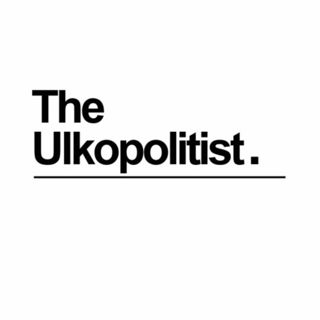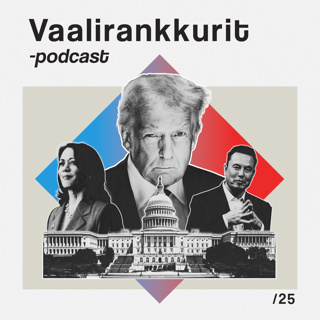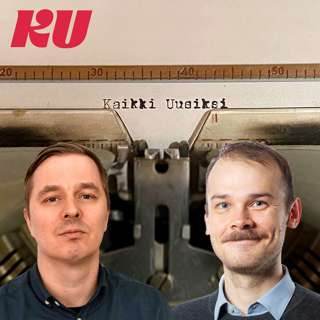
Navigating 2025's Fashion Landscape: Economic Headwinds, Shifting Behaviors, and Sustainability Challenges
The fashion industry is entering a transformative year in 2025, marked by a blend of opportunities and challenges. According to the McKinsey & Company's State of Fashion 2025 report, the industry faces economic headwinds, shifting consumer behaviors, and the need to embrace sustainability while navigating complex global trade dynamics.The global fashion industry is expected to grow at a low single-digit rate in 2025, reflecting economic deceleration and muted consumer confidence. This sluggish growth is a continuation of the trend seen in 2024, with revenue growth expected to stabilize in the low single digits. Notably, non-luxury segments are expected to outperform luxury, marking a significant shift in profit drivers[1][3].Consumers, scarred by the recent period of high inflation, are increasingly price sensitive. This has led to the rise of dupes, or affordable alternatives to high-end fashion items. Additionally, the acceleration of climate change and the continued reshuffling of global trade are contributing to the industry's uncertainty[1][5].Regional differences are becoming starker, with Europe benefiting from falling inflation and recovering tourism, while economic uncertainties persist in markets like China and the United States. In particular, China will remain the region's center of gravity, but brands will pivot focus to other Asian markets, such as Japan, Korea, and India, due to macroeconomic headwinds[1][3].Fashion leaders are pessimistic about the year ahead, with only 20% expecting improvements in consumer sentiment in 2025, while 39% see industry conditions worsening. This is a continuation of the pessimistic outlook seen in the previous year[1][5].In response to these challenges, industry leaders are focusing on building pricing muscle, honing profitability, and broadening scenario planning to capture the full range of economic and political outcomes. This includes adapting to a high-inflation environment, prioritizing profitability over revenue and market share, and making difficult trade-offs in inventory and supply chain management[2].Compared to previous reporting, the industry's outlook has become increasingly gloomy. In 2023, fashion executives were already anticipating a slowdown, with 84% expecting market conditions to decline or stay the same. The current conditions are a manifestation of the negative environment predicted by many in the fashion industry a year ago[2].In conclusion, the fashion industry is navigating a complex landscape in 2025, marked by economic uncertainty, shifting consumer behaviors, and the need to embrace sustainability. Industry leaders must be nimble and quick to adapt to upheavals in a chaotic marketplace to seize the remaining growth opportunities.This content was created in partnership and with the help of Artificial Intelligence AI
13 Helmi 3min

Fashion Industry in 2025: Navigating Challenges and Opportunities
The global fashion industry is entering a transformative year in 2025, marked by a blend of opportunities and challenges. According to the McKinsey & Company's State of Fashion 2025 report, the industry faces economic headwinds, shifting consumer behaviors, and the need to embrace sustainability while navigating complex global trade dynamics.Economic growth in the fashion industry is expected to be sluggish, with revenue growth stabilizing in the low single digits. This reflects economic deceleration and muted consumer confidence. Notably, non-luxury segments are predicted to outperform luxury, marking a significant shift in profit drivers. Falling inflation and recovering tourism in regions like Europe provide some bright spots, but economic uncertainties persist in markets like China and the United States[1][3].Consumer behavior is also undergoing significant changes. Consumers, affected by recent high inflation, are increasingly price sensitive. The rise of "dupes" - affordable alternatives to luxury items - and the acceleration of climate change are further complicating the industry landscape. Regional differences, which became more pronounced in 2024, are expected to become even starker in 2025[1][5].Industry leaders are responding to these challenges by diversifying sourcing beyond China, enhancing sustainability through renewable energy and circular production models, leveraging AI and technology for product discovery and supply chain optimization, and targeting overlooked demographics such as "Silver Spenders"[3].Compared to previous years, the industry's outlook is more pessimistic. In the BoF-McKinsey State of Fashion Executive Survey, only 20% of executives expect improvements in consumer sentiment in 2025, while 39% see industry conditions worsening. This contrasts with the cautious optimism seen in 2022, when 91% of executives predicted market conditions would improve or remain the same[2][5].To navigate these challenges, fashion industry stakeholders are advised to broaden scenario planning, build pricing muscle to adapt to high inflation, and hone profitability by focusing on the bottom line and making difficult trade-offs in inventory and supply chain management[2].In conclusion, the fashion industry in 2025 is characterized by sluggish growth, shifting consumer behaviors, and the need for strategic adaptations to navigate economic and environmental challenges. Industry leaders are responding by diversifying sourcing, enhancing sustainability, leveraging technology, and targeting new demographics. The year ahead will require careful planning and flexibility to navigate the many uncertainties and recessionary risks.This content was created in partnership and with the help of Artificial Intelligence AI
12 Helmi 3min

Fashion Industry Forecast 2025: Navigating Uncertainty, Exploring Growth Opportunities
The current state of the fashion industry is marked by significant challenges and uncertainties. According to the latest report by McKinsey & Company, the industry is expected to face a particularly tumultuous and uncertain 2025, with a long-feared cyclical slowdown finally materializing[1][4].Consumers, affected by the recent period of high inflation, are increasingly price sensitive. This has led to a shift in consumer behavior, with 80 percent of executives expecting no improvement in the global fashion industry in 2025[4]. The rise of dupes, acceleration of climate change, and continued reshuffling of global trade are also contributing to the industry's challenges.Revenue growth is expected to stabilize in the low single digits, a continuation of the sluggishness seen in 2024. Non-luxury brands are forecasted to drive the entirety of the increase in economic profit for the first time since 2010, excluding the COVID-19 pandemic[1][4].Despite these challenges, there are still opportunities for growth. Fashion collaborations are becoming increasingly popular, with brands like Louis Vuitton, Cecilie Bahnsen, and SKIMS partnering with artists and celebrities to create fresh and exciting collections[2].Regional differences are also becoming more pronounced, with Europe benefiting from falling inflation and increased tourism, while the US is expected to be more robust due to the resilience of high-net-worth individuals. Asia is also expected to be a key growth engine, with brands pivoting focus to markets like Japan, Korea, and India[1].In response to these challenges, fashion industry leaders are focusing on building pricing muscle, honing profitability, and broadening scenario planning to navigate the uncertainties ahead[3]. Brands are also updating their organizational structures, introducing new roles, and elevating existing ones to target key growth opportunities and respond more effectively to risk.Compared to previous reporting, the industry's outlook has become increasingly pessimistic. In 2023, 84 percent of industry leaders expected market conditions to decline or stay the same, while 91 percent had predicted improvements or stability in 2022[3]. The current environment is characterized by global fragility, regional realities, and shifting consumer behavior, making it essential for brands to adapt and innovate to survive.Overall, the fashion industry is facing significant challenges in 2025, but with careful planning, strategic partnerships, and a focus on sustainability, there are still opportunities for growth and success.This content was created in partnership and with the help of Artificial Intelligence AI
11 Helmi 2min

Navigating Fashion's Uncertain Future: Insights from the McKinsey 2025 Report
The current state of the fashion industry is marked by significant challenges and uncertainties. According to the latest report from McKinsey, "The State of Fashion 2025," the industry is facing a particularly tumultuous and uncertain year. A long-feared cyclical slowdown has arrived, and consumers, affected by the recent period of high inflation, are increasingly price sensitive[1][3].Revenue growth in the fashion industry is expected to stabilize in the low single digits in 2025, a continuation of the sluggishness seen in 2024. The luxury segment, which has led in value creation in recent years, is expected to see slower growth, while non-luxury will drive the entirety of the increase in economic profit for the first time since 2010, excluding the COVID-19 pandemic[1][3].The industry is also grappling with regional differences, which have become starker in 2024 and are expected to continue in 2025. China's economic deceleration and changing consumer preferences are making growth in the country highly challenging, leading international fashion brands to look to other Asian markets such as India and Japan[1][3].Consumer behavior is shifting significantly, with 80% of executives expecting no improvement in the global fashion industry in 2025. Sustainability has fallen off the agenda, and consumers are becoming more cautious about their discretionary spending. Europeans intend to make the biggest spending cuts on apparel, footwear, and accessories and jewelry[1][3].In response to these challenges, fashion industry leaders are focusing on diversifying their sourcing footprint in Asia and laying the foundations for nearshoring. They are also investing in digital marketing and embracing creative campaigns and new channels such as retail media networks and the metaverse to achieve greater ROI on marketing spend and gather valuable first-party data[1][2].Compared to previous years, the industry's outlook is more pessimistic. In 2023, 84% of industry leaders expected market conditions to decline or stay the same, while in 2025, 80% expect no improvement[2][3].Key statistics include:- 20% of executives expect improvements in consumer sentiment in 2025, while 39% see industry conditions worsening[1][3].- Revenue growth is expected to stabilize in the low single digits in 2025[1][3].- Non-luxury will drive the entirety of the increase in economic profit for the first time since 2010, excluding the COVID-19 pandemic[1][3].Overall, the fashion industry is facing significant challenges in 2025, including economic uncertainty, geographic disparities, and shifting customer behavior and preferences. Industry leaders are responding by diversifying their sourcing footprint, investing in digital marketing, and focusing on nearshoring and sustainability.This content was created in partnership and with the help of Artificial Intelligence AI
7 Helmi 3min

Fashion Industry Navigates Uncertain 2025: Ecommerce, Sustainability, and Strategic Partnerships
The current state of the fashion industry is marked by significant challenges and shifts in consumer behavior, market dynamics, and supply chain developments. According to recent reports, the industry is expected to face a tumultuous and uncertain 2025, with a long-feared cyclical slowdown materializing due to high inflation, the rise of dupes, climate change, and global trade reshuffling[1][4].Key statistics highlight the pessimistic outlook: only 20% of fashion leaders polled in the BoF-McKinsey State of Fashion Executive Survey expect improvements in consumer sentiment in 2025, while 39% see industry conditions worsening[1][4]. Revenue growth is expected to stabilize in the low single digits, with non-luxury driving the increase in economic profit for the first time since 2010[1][4].Despite these challenges, there are areas of growth and innovation. The ecommerce fashion industry continues to dominate, with a projected market value of over $781 billion, expected to more than double within six years[3]. Brands are responding to changing consumer preferences by focusing on sustainability, tech-enabled shopping, and blending digital and physical retail environments[3].Recent collaborations and partnerships underscore the industry's adaptability. Notable examples include Louis Vuitton's collaboration with Japanese artist Takashi Murakami, Balenciaga's partnership with Under Armour, and H&M's tie-up with Belgian designer Glenn Martens[2]. These collaborations aim to merge aesthetics, technology, and cultural storytelling, capturing customer excitement across continents.In terms of market movements, Asia is emerging as a new growth engine, with India and Japan becoming focal points for high-street and luxury brands, respectively[1][4]. The industry is also witnessing a shift towards nearshoring and diversifying sourcing footprints in Asia due to rising costs, evolving trade policies, and sustainability targets[1][4].Consumer behavior is increasingly price-sensitive, with 75% of consumers trading down their purchases for better value and pricing, and 86% of Gen Z and millennials prioritizing sustainable retail[3]. Brands are responding by offering more affordable and sustainable options, such as J.Crew's collaboration with Araks for an everyday-luxury capsule[2].In conclusion, the fashion industry is navigating a complex landscape of economic uncertainty, geographic disparities, and shifting consumer preferences. While challenges abound, there are opportunities for growth and innovation, particularly in ecommerce, sustainability, and strategic partnerships. Industry leaders are responding by adapting to changing consumer behavior, diversifying their sourcing footprints, and investing in tech-enabled shopping experiences.This content was created in partnership and with the help of Artificial Intelligence AI
6 Helmi 3min

"Fashion 2025: Navigating Uncertainty and Reinventing the Industry"
The current state of the fashion industry is marked by significant challenges and uncertainties. According to the latest report from McKinsey, "The State of Fashion 2025," the industry is expected to face a particularly tumultuous and uncertain year. A long-feared cyclical slowdown has arrived, with consumers becoming increasingly price sensitive due to recent high inflation[1][3].Key statistics highlight the pessimistic outlook: only 20% of fashion executives expect improvements in consumer sentiment in 2025, while 39% see industry conditions worsening. Revenue growth is expected to stabilize in the low single digits, a continuation of the sluggishness seen in 2024. Notably, non-luxury segments are forecasted to drive the entirety of the increase in economic profit for the first time since 2010, excluding the COVID-19 pandemic[1][3].Regional differences are becoming starker, with Asia emerging as a critical market. China's economic deceleration and changing consumer preferences are making growth challenging, leading brands to focus on other Asian markets like India and Japan. Japan's luxury boom is expected to continue into 2025, fueled by strong international and domestic spend[1][3].The industry is also grappling with the rise of "dupes" and the acceleration of climate change, which are further complicating the landscape. Sustainability, once a key agenda item, has fallen off the radar for many executives, indicating a shift in priorities[1][3].In response to these challenges, fashion leaders are diversifying their sourcing footprints in Asia and laying the foundations for nearshoring. They are also leveraging AI-powered curation across content and search to reinvent brand and product discovery[1][3].Comparing current conditions to previous reporting, the industry's outlook has become increasingly pessimistic. In 2023, 84% of industry leaders expected market conditions to decline or stay the same, a stark contrast to the cautious optimism seen in 2022[2].To navigate these challenges, executives are focusing on building pricing muscle, honing profitability, and broadening scenario planning. They are also prioritizing cost improvements and increasing prices to protect their bottom lines[2].In conclusion, the fashion industry is facing a complex and uncertain 2025. With sluggish growth, shifting consumer behavior, and significant market disruptions, leaders must adapt and innovate to seize growth opportunities. By diversifying sourcing, leveraging technology, and focusing on profitability, the industry can navigate these challenges and emerge stronger.This content was created in partnership and with the help of Artificial Intelligence AI
5 Helmi 2min

Fashion in Flux: Navigating Uncertainty and Adapting to Change in the Industry
The current state of the fashion industry is marked by significant challenges and uncertainties. According to the latest report from McKinsey, "The State of Fashion 2025," the industry is facing a particularly tumultuous and uncertain year. A long-feared cyclical slowdown has arrived, with consumers, affected by recent high inflation, becoming increasingly price sensitive[1][3].Key statistics highlight the pessimistic outlook: only 20% of fashion executives expect improvements in consumer sentiment in 2025, while 39% see industry conditions worsening. Revenue growth is expected to stabilize in the low single digits, a continuation of the sluggishness seen in 2024[1][3].Regional differences are becoming starker, with Asia emerging as a critical market. China's economic deceleration and changing consumer preferences are making growth challenging, leading international fashion brands to look to other Asian markets such as India and Japan. Japan's luxury boom is expected to continue into 2025, fueled by strong international and domestic spend[1][3].The industry is also grappling with the rise of dupes, the acceleration of climate change, and the continued reshuffling of global trade. Sustainability, which was once a top priority, has fallen off the agenda for many brands[3].In response to these challenges, fashion leaders are focusing on diversifying their sourcing footprint in Asia and laying the foundations for nearshoring. They are also investing in AI-powered curation across content and search to reinvent brand and product discovery[3].Comparing current conditions to previous reporting, the industry's outlook has become increasingly pessimistic. In 2023, 84% of fashion executives predicted market conditions would decline or stay the same, a stark contrast to the cautious optimism felt heading into 2022[2].The sportswear industry, however, is doing comparatively well, partly due to its integration into the fashion market and faster growth rate[5].In conclusion, the fashion industry is navigating a complex landscape of economic uncertainty, geographic disparities, and shifting consumer behavior. To seize growth, brands must navigate a maze of compounding challenges at every turn, focusing on strategic planning, pricing strategies, and supply chain management. The industry's resilience will be tested in 2025, with only those who adapt and innovate likely to thrive.This content was created in partnership and with the help of Artificial Intelligence AI
4 Helmi 2min

Navigating Fashion's Challenges in 2025: Diversifying, Sustainability, and Tech-Enabled Experiences
The current state of the fashion industry is marked by significant challenges and uncertainties. According to the latest McKinsey report, "The State of Fashion 2025," the industry is expected to grow at a low single-digit rate in 2025, reflecting economic deceleration and muted consumer confidence[1][3]. This sluggish growth is a continuation of the trends seen in 2024, with non-luxury segments outperforming luxury for the first time since 2010, excluding the COVID-19 pandemic.Consumer behavior has shifted significantly, with 75% of consumers trading down their purchases for better value and pricing, a trend that rises to 86% among Gen Z and millennials[2]. These demographics increasingly crave sustainable retail and tech-enabled shopping experiences, blending digital and physical retail environments. However, reviews are mixed on whether consumers are willing to pay for sustainability.The industry faces economic headwinds, including the lingering effects of high inflation, which has led to cautious consumer spending. Inflation remains a primary worry for 32% of consumers across 29 countries, according to Ipsos's 2024 global consumer research[2]. Retailers have responded with price increases, but these have been driven by rising input costs rather than profit-taking, resulting in lower gross margins.Geographic disparities are also pronounced, with Europe benefiting from falling inflation and increased tourism, while the United States sees steady growth supported by high-net-worth individuals and a robust stock market[1][3]. Asia, particularly Japan, Korea, and India, are emerging as new growth engines, counteracting uncertainty around consumer spending in China, which is still recovering from the pandemic.To navigate these challenges, fashion industry stakeholders are advised to diversify sourcing beyond China, enhance sustainability through renewable energy and circular production models, leverage AI and technology for product discovery and supply chain optimization, and target overlooked demographics such as "Silver Spenders"[3].Compared to previous years, the industry's outlook is more pessimistic. In the BoF-McKinsey State of Fashion Executive Survey, only 20% of executives expect improvements in consumer sentiment in 2025, while 39% see industry conditions worsening[1][5]. This contrasts with the cautious optimism seen heading into 2022, when 91% of executives predicted market conditions would improve or remain the same[4].In summary, the fashion industry in 2025 is characterized by sluggish growth, shifting consumer behaviors, economic uncertainties, and geographic disparities. Industry leaders must adapt to these complex market conditions by diversifying sourcing, enhancing sustainability, leveraging technology, and targeting new demographics to drive growth and innovation.This content was created in partnership and with the help of Artificial Intelligence AI
3 Helmi 3min





















